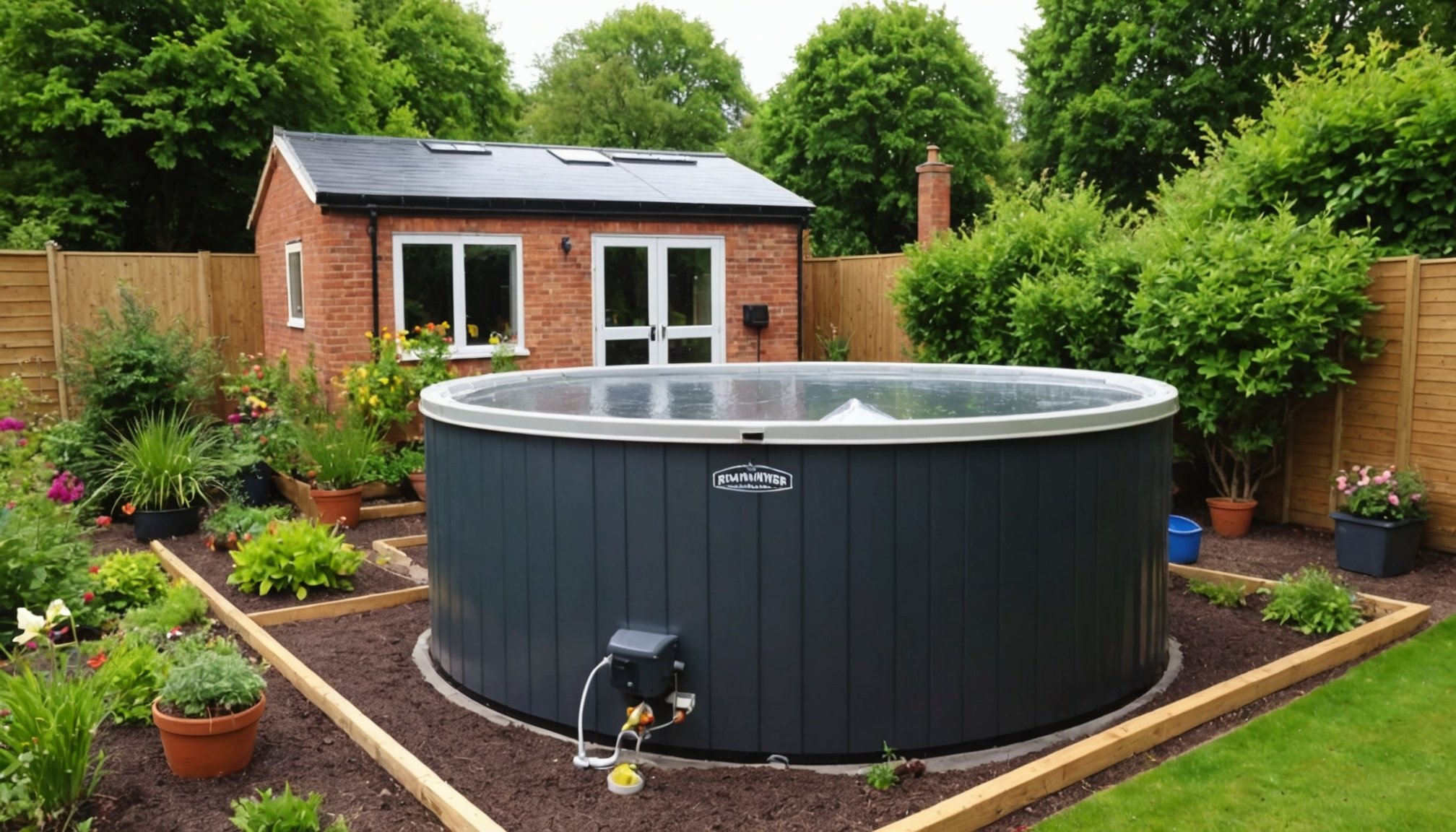Overview of Rainwater Harvesting
Rainwater harvesting is the collection and storage of rainwater for later use. This practical solution can play a crucial role in achieving sustainable gardening. In the UK, where water shortages are becoming more frequent, this method can help capitalise on natural rainfall, significantly reducing the need for municipal water supply for gardening purposes.
The importance of rainwater harvesting to sustainable gardening cannot be overstated. With increasing concerns about water scarcity, this method offers a viable way to conserve water. Gardening consumes a substantial amount of water, and by utilising harvested rainwater, gardeners can maintain lush landscapes without depleting vital water resources.
A lire aussi : Discover the Best Organic Strategies for Controlling Snails in UK Gardens
Incorporating rainwater harvesting into gardening can have a considerable impact on water conservation efforts. It’s reported that as much as 70% of household water goes to outdoor use in some parts of the UK. Therefore, adopting rainwater harvesting techniques can drastically cut down on this demand, benefiting both gardeners and the environment.
This technique not only aids in water conservation but also promotes the health of sustainable home gardens by providing fresh, chemical-free water, encouraging more resilient and productive plants. This mutually beneficial relationship makes rainwater harvesting an attractive option for gardeners striving for sustainability.
En parallèle : Discover the Best Vegetables for Shady UK Gardens: Top Shade-Loving Plants to Grow
Best Practices for Implementing Rainwater Harvesting
Implementing a successful rainwater harvesting system requires thoughtful planning, especially tailored to UK gardening practices. A well-designed system can greatly benefit home gardens by conserving water and offering a backup during dry spells.
Essential components include a catchment area, usually a roof, gutters to direct rainwater, a storage tank or cistern, and pipes to transport the water. Effective system design should consider the size of your garden and local rainfall patterns to determine the storage capacity needed.
When planning your rainwater catchment system, start by mapping out where the water will be collected and where it will be stored. The design should be practical, integrating seamlessly into your garden without disrupting existing plants or structures.
Choosing the right materials is also crucial. In the UK’s climate, durable components like UV-stabilised plastic or galvanised steel for tanks are recommended to withstand varied weather conditions. Techniques such as first flush systems help maintain water quality by diverting the initial flow, which might contain debris.
Adopt these implementation strategies to maximise efficiency and sustainability in your gardening practices. Integrating rainwater harvesting can transform how you manage water resources, providing long-term benefits for your garden ecosystem.
Benefits of Rainwater Harvesting for Home Gardens
Using rainwater harvesting in home gardens offers numerous environmental benefits, cost savings, and enhances garden health. One of the most immediate advantages for homeowners is the potential for reduced water bills. By utilizing rainwater, which is essentially free, you can decrease reliance on municipal water supplies, leading to noticeable cost savings.
Environmental sustainability is another critical aspect. Rainwater harvesting can reduce the demand on traditional water sources, decreasing the ecological footprint of a household. Moreover, this practice supports biodiversity by protecting natural waterways from excess runoff, which often carries pollutants. Using rainwater instead encourages a sustainable lifestyle by lessening the strain on local resources.
Regarding garden health, rainwater is often more beneficial for plants compared to treated tap water. It’s generally free from chlorine, fluoride, and other chemicals that can accumulate in municipal water supplies. As a result, plants might experience improved health and growth when nourished with naturally occurring, nutrient-rich rainwater. This can lead to more vibrant plants, quicker growth, and potentially bumper harvests.
In summary, rainwater harvesting supports environmental goals, offers financial perks, and positively affects plant vitality. It’s an investment in both eco-friendliness and the health of your home garden.
Legal Regulations and Incentives in the UK
In the UK, legal considerations regarding rainwater harvesting systems are becoming increasingly significant. These systems are generally encouraged under national regulations, as they support water conservation efforts and sustainable gardening practices. However, it’s essential to ensure compliance with local regulations concerning installation and water usage.
Government programs in the UK actively promote sustainable gardening by offering various incentives to homeowners and gardeners. These may include grants or rebates for installing rainwater harvesting systems, making sustainability a financially attractive choice. Such support aims to increase participation in eco-friendly practices and help reduce the environmental footprint of gardening activities.
There’s a common misconception that installing rainwater harvesting systems requires complex property rights adjustments. In reality, most homeowners have the freedom to implement these systems, provided they follow existing guidelines. It’s important to be aware of regulations related to water quality and system safety to avoid legal issues.
Misunderstandings about the legality of rainwater systems often arise from outdated perceptions or lack of understanding regarding property rights. Engaging with local authorities or seeking expert advice can clarify these doubts and assist with navigating regulatory landscapes effectively.
Case Studies and Examples
Exploring success stories in rainwater harvesting reveals inspiring transformations in UK gardens. Consider the Johnson household, where simple rain barrels have dramatically reduced water bills. This practical success showcases an environmentally friendly solution that anyone can implement. By using harvested rainwater, the Johnsons not only save money but also contribute to water conservation efforts.
In another example, a local community project in Brighton transformed an unused park area into a thriving green space. This initiative involved installing an extensive rainwater collection system to irrigate community gardens. Not only did it revitalise the park, but it also educated residents about sustainable water practices. Participants learned the lessons of integrating landscape design with water management, positively impacting both the environment and the community.
From these practical applications, several tips emerge: Start small with accessible rain barrels, and involve the community in larger-scale projects for a shared benefit. Understanding local climate conditions is imperative for designing effective systems. These examples underline the importance of innovation and collaboration in crafting successful rainwater harvesting systems. By adopting these strategies, individuals and communities alike can effectively manage water resources, promoting sustainability and resilience.
Maintenance and Troubleshooting
Proper system upkeep is essential for any effective rainwater harvesting setup. Regularly inspect and clean your system components, such as gutters, downspouts, and storage tanks, to prevent debris build-up and ensure smooth water flow. Moreover, check filters and replace them as needed to maintain optimal filtration performance.
Gardeners frequently encounter common issues such as clogs or algae growth within their rainwater systems. Clogs can often be resolved by flushing out the system with a hose or manually removing blockages. For algae, install dark containers or use algaecides to inhibit growth. These proactive measures help uphold the quality of water collected and extend the lifespan of the system.
When facing gardening solutions concerning seasonal variations, it’s crucial to adjust your system to accommodate different water needs. During the rainy season, ensure overflow outlets are clear to prevent flooding. In contrast, during dry spells, implement efficient watering techniques such as drip irrigation to maximize water usage.
In diverse climates, understanding seasonal considerations can enhance the efficiency of your rainwater harvesting system. For instance, in colder regions, insulate pipes to prevent freezing, while in warmer areas, ensure your system has adequate ventilation to mitigate heat-induced pressure buildups. These adjustments are vital to maintaining a consistent, reliable water supply year-round.






